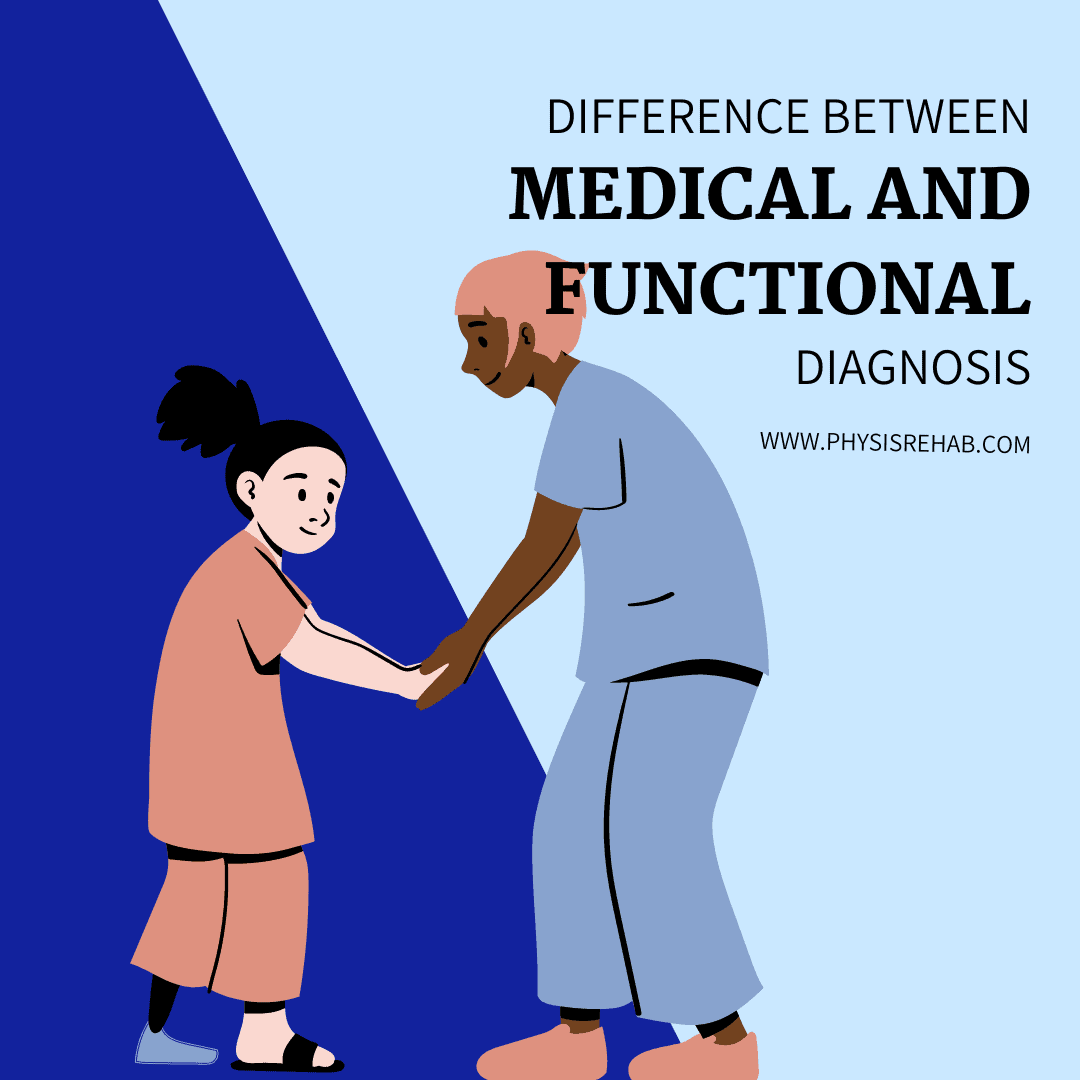Difference between and Medical and Functional Diagnosis
A diagnosis is an identification of the nature of the illness or any problem by checking the symptoms. It is commonly known and sought after in the event of sickness and injury. However, a lesser known fact is that there are 2 categories of diagnosis; Medical and Functional.
A medical diagnosis is when a doctor is seen for an ailment. The physician will check all the symptoms, prescribe diagnostic tests like blood tests, urine tests, ultrasound, etc… and determine the cause of the symptoms. An Example is when someone with pain in the front of the knee, follows up with the doctor and is diagnosed with disorders associated with patellofemoral conditions.
A Functional Diagnosis is when the same patient sees a physical therapist, who now, evaluates the patient with myriad clinical tools and examinations to determine the precise diagnosis of the cause of the patellofemoral pain/injury. Some common clinical tools utilized:
- Range of Motion assessment
- Muscle flexibility and mobility assessment
- Joint mobility assessment
- Strength assessment
- Mechanical/postural assessment
- Gait assessment
- Orthopedic tests
- Assessment of muscle chain activation
A Functional Diagnosis differs from Medical diagnosis in the sense that a Functional Diagnosis is based on the interplay of the underlying movement and mechanics of the muscles and the joints in the body. For Example, a diagnosis of Parkinson’s is a medical diagnosis and treated as such. The associative limitations in balance, strength, flexibility, posture, etc… require a functional diagnosis because improvement of these factors will lead to better and safer quality of life.
Functional Diagnosis provided by Physical Therapists can
- Restore Limitations
- A diagnosis of patellofemoral pain is limiting in itself because it does not give you the solution. A functional diagnosis can identify limitations which can then be treated by your physical therapist. This treatment, ultimately leads to reduced pain and improved tolerance for walking, standing, running, jumping, etc.…, i.e., painfree movement, which matters most.
- Prevent future injuries
- The interplay between muscles and joints; their ability to work with each other, defines your ability to perform an activity. A functional diagnosis determines the weak areas and the limitations which are then treated with specific exercises to prevent future issues from emerging.
Historically, patients needed a medical diagnosis to begin their physical therapy. However, with advancements in clinical education and the progress of the degree from a masters to a doctorate, your Doctor of Physical Therapy can see you directly to diagnose movement related disorders. This ability to see Physical Therapists directly is defined as Direct Access. This helps reduce timely, expensive, and non-essential trips to the medical doctors. Further, it reduces unnecessary exposure to diagnostic test and starts care immediately.
In the state of New York, You can see your physical therapist for 30 days or 10 visits whichever occurs first, without needing a physician consult or a prescription.
Whether to see a physician or physical therapist first, is determined by the problem you are experiencing. Problems arising from the joints and muscles can be evaluated and treated without needing a physician consult. Further, Physical Therapists are trained to identify red flags, i.e. situations needing further medical consult, and can direct you to see other specialists.
Here at Physis Physical Therapy (www.physisrehab.com) our compassionate and knowledgeable experts are ready to help you. With an emphasis on functional diagnosis and cutting edge clinical tools/expertise, our therapists can guide you in the right direction to achieve painfree life. Call us at 212-706-7480 or email at info@physisrehab.com now.

